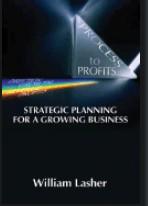Question
Problem 11-26 (Algo) A 30-year maturity bond making annual coupon payments with a coupon rate of 15.3% has duration of 10.59 years and convexity of
Problem 11-26 (Algo)
A 30-year maturity bond making annual coupon payments with a coupon rate of 15.3% has duration of 10.59 years and convexity of 163.0. The bond currently sells at a yield to maturity of 9%. Required:
a. Find the price of the bond if its yield to maturity falls to 8%. (Do not round intermediate calculations. Round your answer to 2 decimal places.)
price of bond?
b. What price would be predicted by the duration rule, if its yield to maturity falls to 8%? (Do not round intermediate calculations. Round your answer to 2 decimal places.)
predicted price? c. What price would be predicted by the duration-with-convexity rule, if its yield to maturity falls to 8%? (Do not round intermediate calculations. Round your answer to 2 decimal places.)
predicted price? d-1. What is the percent error for each rule, if its yield to maturity falls to 8%? (Enter your answers as a positive value. Do not round intermediate calculations. Round "Duration Rule" to 2 decimal places and "Duration-with-Convexity Rule" to 3 decimal places.)
YTM : 8%
percent error for duration rule?
percent error for duration with convexity rule?
d-2. What do you conclude about the accuracy of the two rules?
multiple choice 1
-
The duration rule provides more accurate approximations to the actual change in price.
-
The duration-with-convexity rule provides more accurate approximations to the actual change in price.
e-1. Find the price of the bond if it's yield to maturity rises to 10%. (Do not round intermediate calculations. Round your answer to 2 decimal places.)
Pice of bond?
e-2. What price would be predicted by the duration rule, if it's yield to maturity rises to 10%? (Do not round intermediate calculations. Round your answer to 2 decimal places.)
predicted price? e-3. What price would be predicted by the duration-with-convexity rule, if it's yield to maturity rises to 10%? (Do not round intermediate calculations. Round your answer to 2 decimal places.)
predicted price?
e-4. What is the percent error for each rule? (Do not round intermediate calculations. Round "Duration Rule" to 2 decimal places and "Duration-with-Convexity Rule" to 3 decimal places.)
YTM: 10%
percent error for duration rule?
percent error for duration with convexity rule?
e-5. Are your conclusions about the accuracy of the two rules consistent with parts (a) (d)?
multiple choice 2
-
Yes
-
No
Step by Step Solution
There are 3 Steps involved in it
Step: 1

Get Instant Access to Expert-Tailored Solutions
See step-by-step solutions with expert insights and AI powered tools for academic success
Step: 2

Step: 3

Ace Your Homework with AI
Get the answers you need in no time with our AI-driven, step-by-step assistance
Get Started


